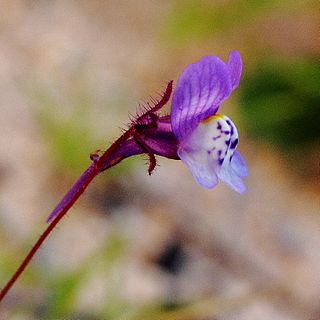
Mackerel is a common name applied to a number of different species of pelagic fish, mostly from the family Scombridae. They are found in both temperate and tropical seas, mostly living along the coast or offshore in the oceanic environment.

Herring are forage fish, mostly belonging to the family of Clupeidae.
Linaria ricardoi is a rare Portuguese endemic plant species in the family Plantaginaceae. It blossoms from March to April.

Orthetrum is a large genus of dragonflies in the Libellulidae family. They are commonly referred to as skimmers.
This article is a list of biological species, subspecies, and evolutionary significant units that are known to have become extinct during the Holocene, the current geologic epoch, ordered by their known or approximate date of disappearance from oldest to most recent.
Arabis sadina is a species of flowering plant in the family Brassicaceae. It is endemic to Portugal.
Thymus lotocephalus is a species of flowering plant in the mint family Lamiaceae, endemic to southern Portugal, specifically central Algarve. It inhabits both the coast and the interior (Barrocal). On the coast it is found in pine forest clearings and xerophilic scrub, on sandy, acidic substrates. On the interior, in thyme and clearings of xerophilic scrub, on marginal or calcareous substrates, somewhat decarbonated.

Linaria algarviana is a species of toadflax in the plantain family Plantaginaceae, endemic to southern Portugal, specifically the western portion of the Algarve. It inhabits clearings of xerophilic scrub, pastures and meadows close to the coast, very rarely in vineyards and pine forests. Usually in dry places, with sandy substrate.

Ionopsidium acaule is a species of flowering plant in the crucifer family Brassicaceae, endemic to coastal Portugal, specifically from Nazaré to Sagres. It inhabits wet sandy substrates, in clearings of junipers, pine forests and other xerophytic scrub. Sometimes semi-ruderal on roadsides. More rarely, on calcareous or basaltic-derived soils.
Herniaria maritima is a species of flowering plant in the family Caryophyllaceae, endemic to coastal Portugal. It inhabits coastal dunes, mainly in clearings of creeping forests and Junipers in fixed dunes, on sandy, neutral or basic substrates.
Herniaria algarvica is a species of flowering plant in the family Caryophyllaceae, endemic to southwestern coastal Portugal. It inhabits clearings of scrub in maritime cliffs, rocks and coastal dunes.







